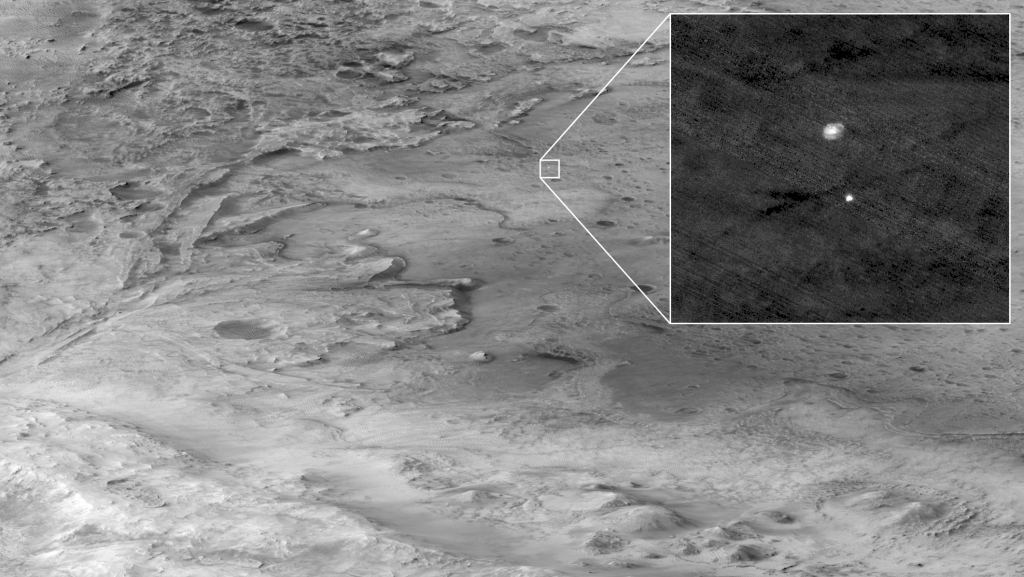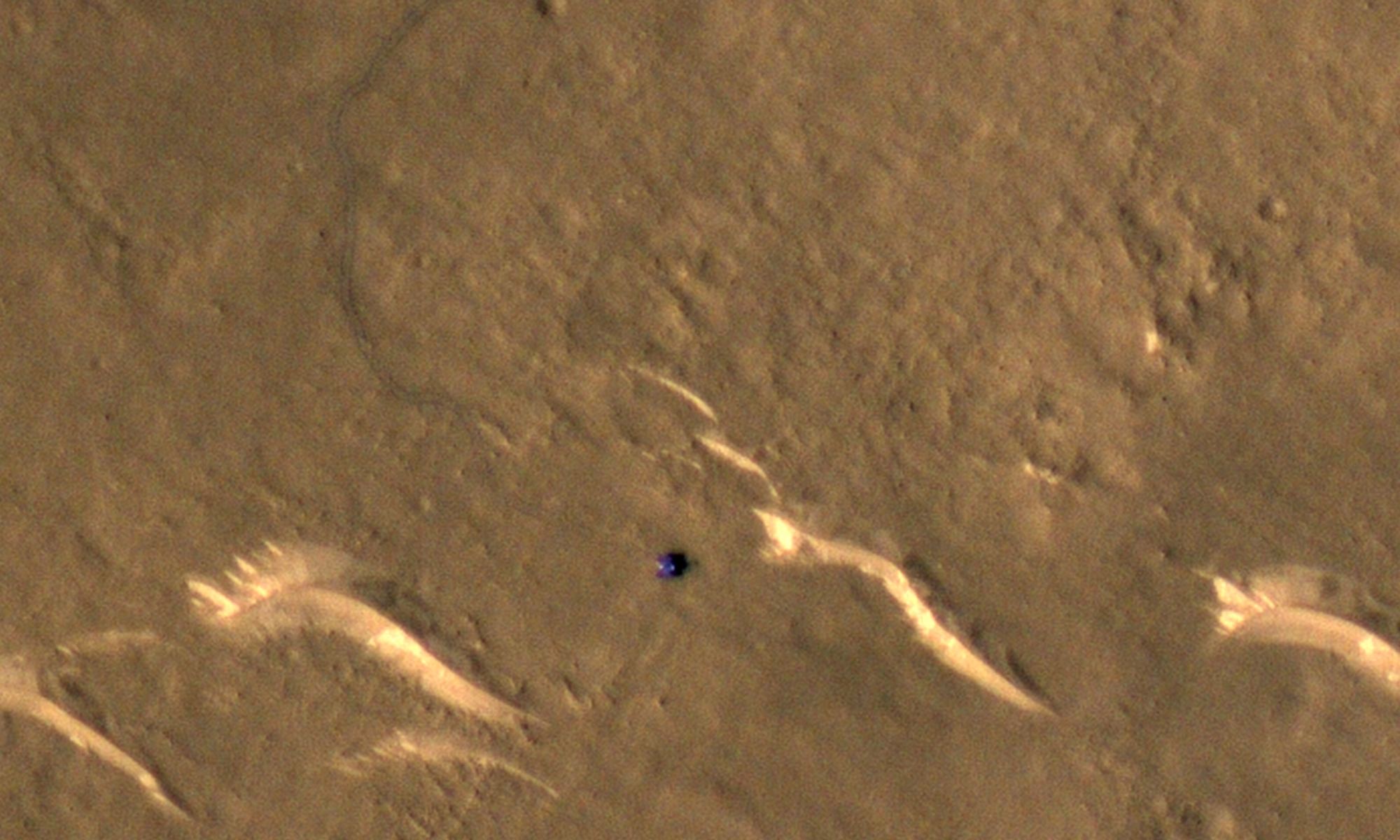China’s Tianwen-1 lander and Zhurong rover touched down on the Martian plain Utopia Planitia on May 14, 2021 after spending about three months orbiting the Red Planet. While the Chinese Space Agency has shared images of the rover and lander (including a cute family portrait taken by a wireless remote camera), NASA’s Mars Reconnaissance Orbiter has been following the rover’s travels from above.

Early on in the Zhurong mission, the HiRISE camera on MRO spotted the lander and rover, as seen from orbit. Our lead image is the latest view from HiRISE, showing the rover’s path and new location, letting us follow along on how far the rover has traveled in the 10 months since it landed. This image was acquired on March 11, 2022.
This tweet from the HiRISE teams shows views of various hardware on Mars surface from China’s mission, such as the lander and backshell.
But in this image below shows Zhurong’s entire trip, and if you look closely (click this link to be able to zoom into the image) you can even see the rover tracks. The HiRISE team wrote on their blog that “It’s exact path can be traced from the wheel tracks left on the surface. It has traveled south for roughly 1.5 kilometers (about 1 mile). “ The imaging team has actually added contrast so that the tracks are more visible.

Like most Mars orbiting cameras, HiRISE acquires images in long, thin strips. Because of how the camera detectors are set up — with 10 detectors lined up in an array — each strip covers about 5 kilometers wide. But HiRISE has two extra pairs of detectors on the two middle strips to get color data, so there’s a central color swath about 1 kilometer wide.
MRO orbits about 316 km (250 miles) above the Martian surface. At this altitude it can take pictures of Mars with resolutions of 0.3 m/pixel (about 1 foot); therefore it can resolve objects less than a meter across. With that type of power, it can spot the various Mars landers and rovers on the surface, including Curiosity and Perseverance. HiRISE even captured those two as they were descending under parachute to the surface.

Richard Leis, a member of the HiRISE team said on Twitter that because of the amount of territory covered by the HiRISE image strips, it always takes time and skill to spot human-placed artifacts on Mars’ surface:

